Abstract
Fluorescent antibody conjugates were prepared from five species of anaerobic cocci commonly isolated from human infections. When tested with homologous and heterologous cells these conjugates were found to be highly specific. There was no evidence of a common genus antigen. Peptococcus magnus conjugates detected a species-specific antigen; cross-reactions with Peptostreptococcus anaerobius were readily eliminated by absorption. The conjugates from Peptococcus asaccharolyticus, Peptococcus prevotii, Peptostreptococcus, anaerobius, and Peptostreptococcus intermedius displayed a high degree of strain specificity. Occasional cross-reactions were detected with homologous strains, suggesting the presence of common antigens, but no attempt was made to determine the number of different serotypes in these species.
Full text
PDF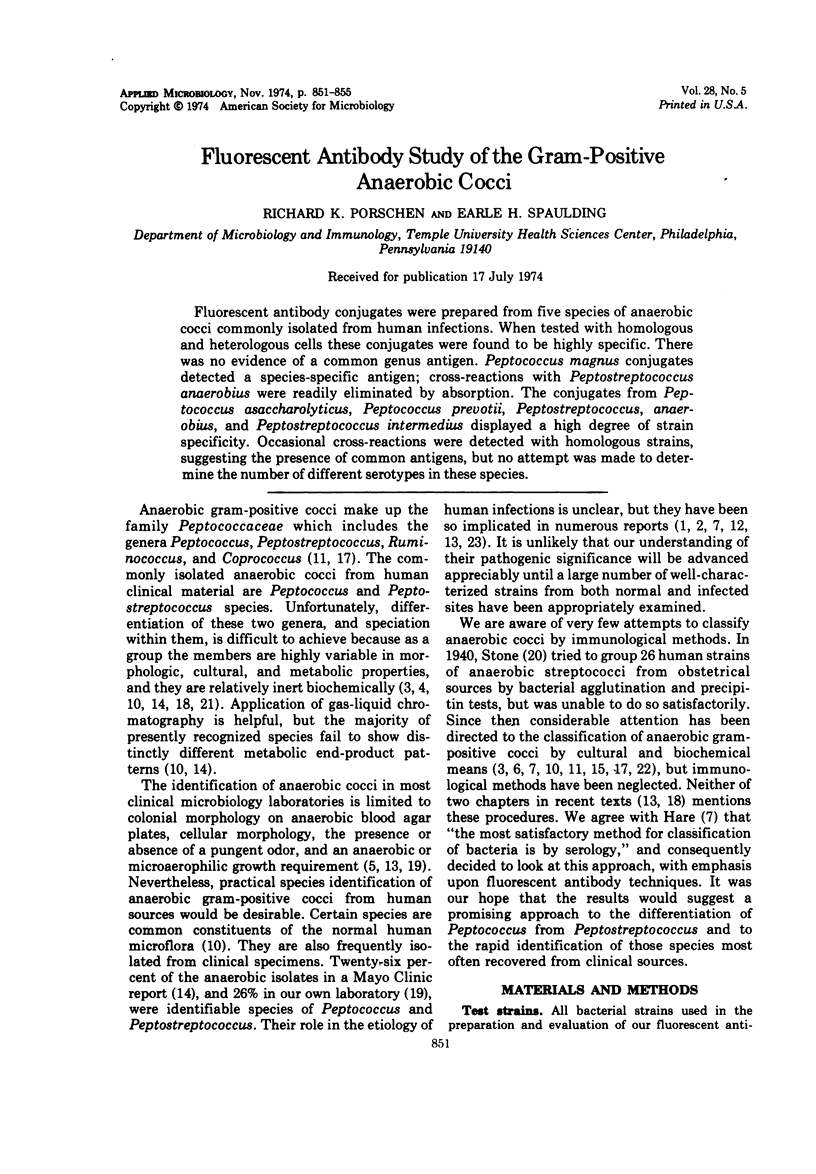
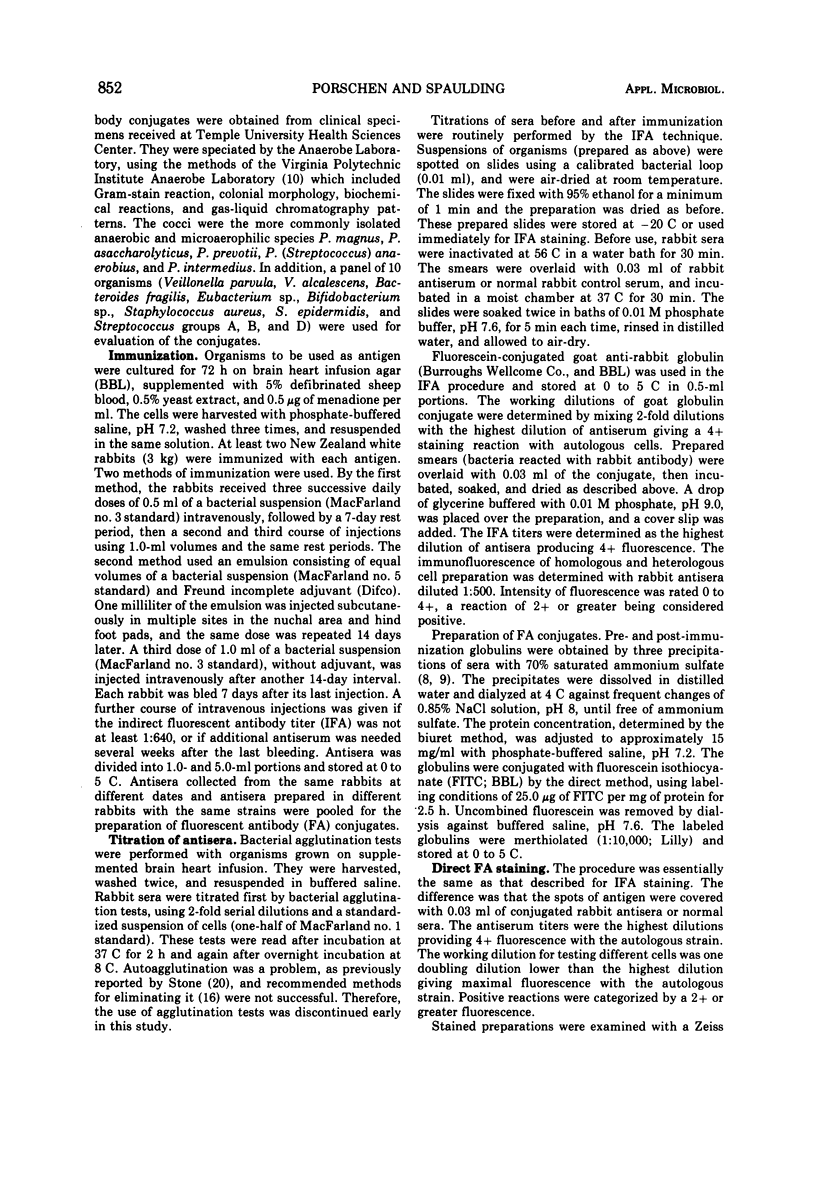
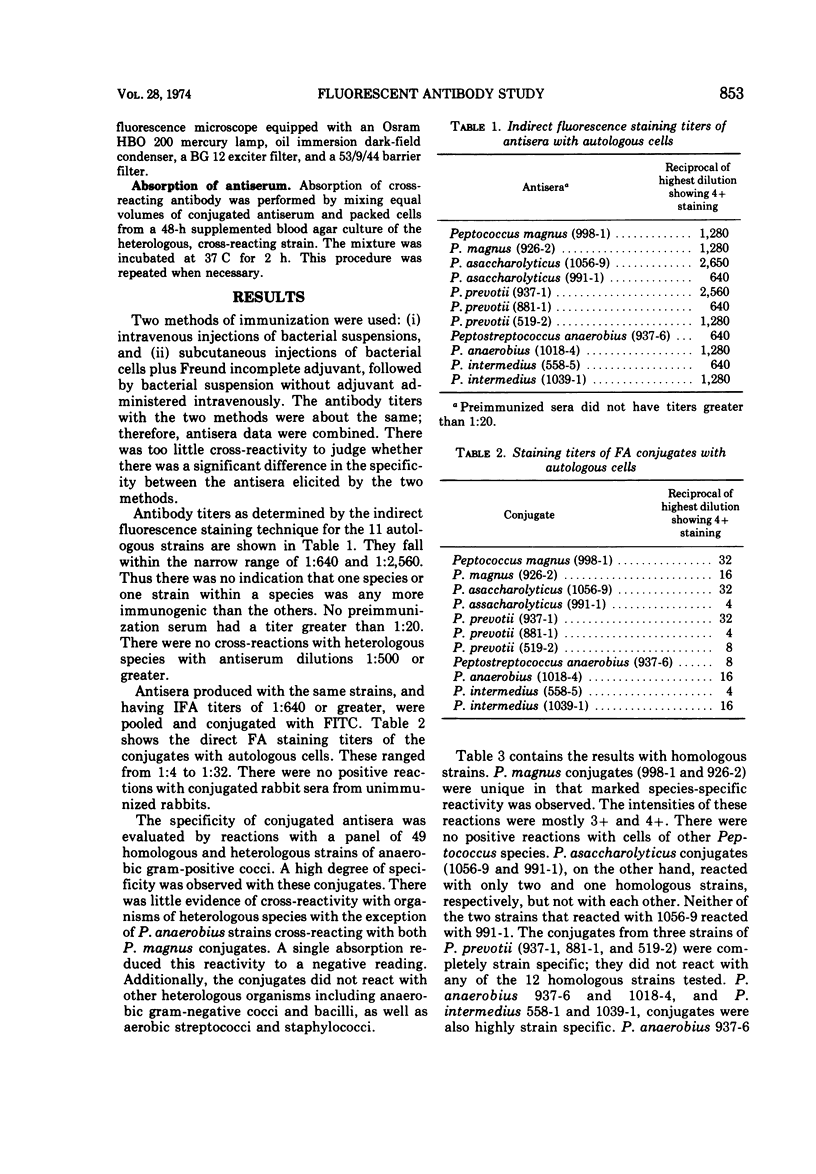
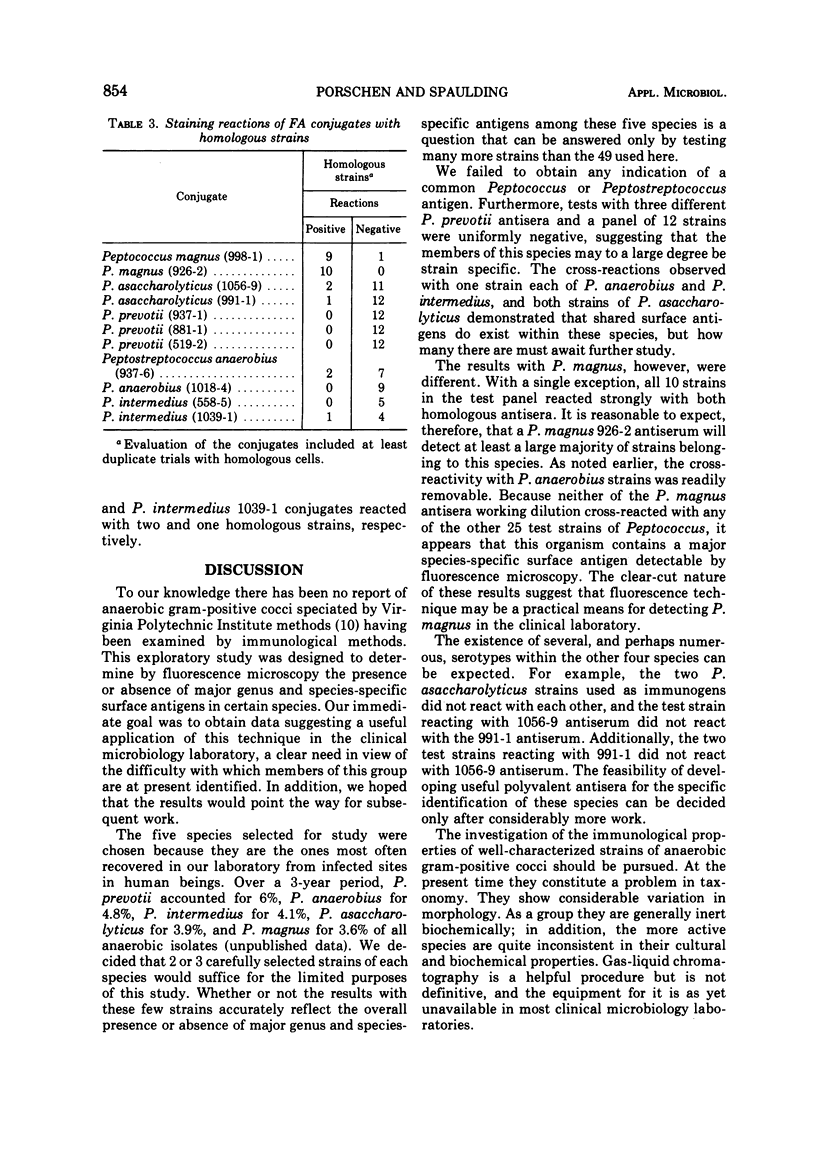
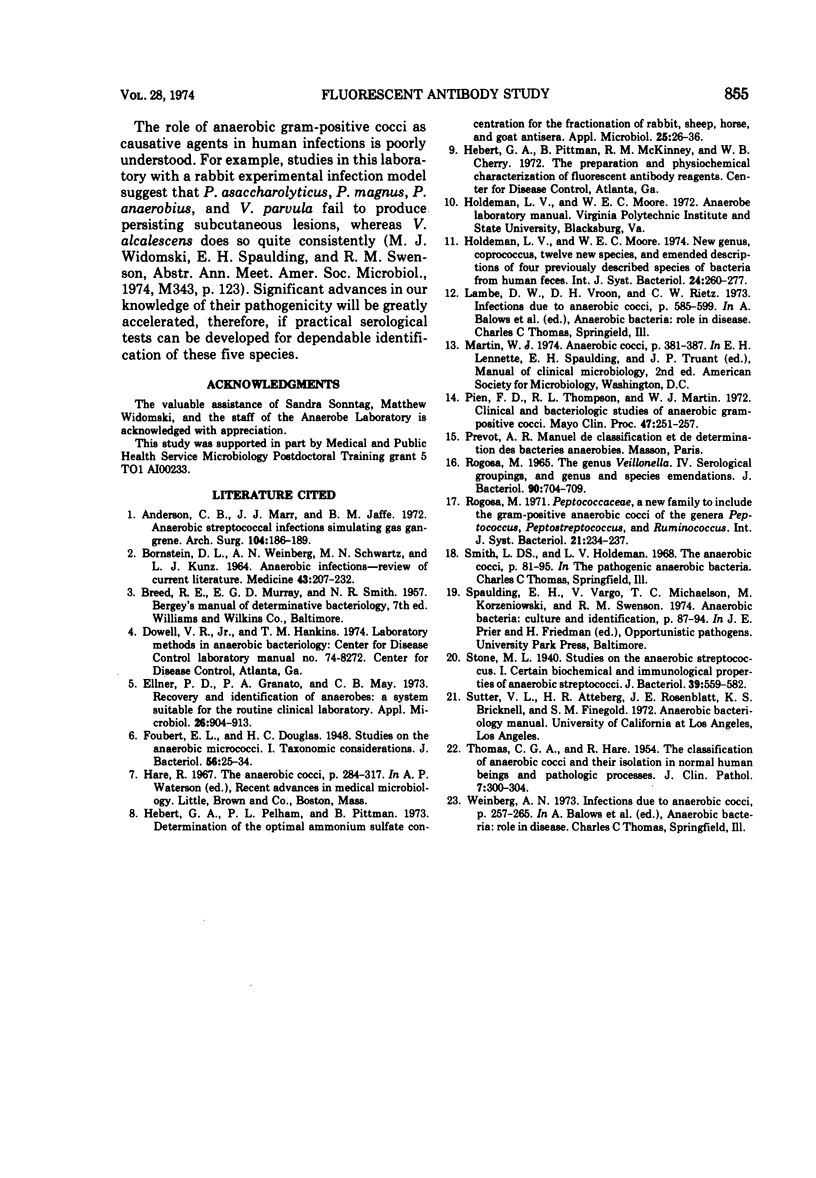
Selected References
These references are in PubMed. This may not be the complete list of references from this article.
- Anderson C. B., Marr J. J., Jaffe B. M. Anaerobic streptococcal infections simulating gas gangrene. Arch Surg. 1972 Feb;104(2):186–189. doi: 10.1001/archsurg.1972.04180020066012. [DOI] [PubMed] [Google Scholar]
- BORNSTEIN D. L., WEINBERG N., SWARTZ M. N., KUNZ L. J. ANAEROBIC INFECTIONS--REVIEW OF CURRENT EXPERIENCE. Medicine (Baltimore) 1964 May;43:207–232. doi: 10.1097/00005792-196405000-00003. [DOI] [PubMed] [Google Scholar]
- Ellner P. D., Granato P. A., May C. B. Recovery and identification of anaerobes: a system suitable for the routine clinical laboratory. Appl Microbiol. 1973 Dec;26(6):904–913. doi: 10.1128/am.26.6.904-913.1973. [DOI] [PMC free article] [PubMed] [Google Scholar]
- Foubert E. L., Douglas H. C. Studies on the Anaerobic Micrococci: I. Taxonomic Considerations. J Bacteriol. 1948 Jul;56(1):25–34. [PMC free article] [PubMed] [Google Scholar]
- Hebert G. A., Pelham P. L., Pittman B. Determination of the optimal ammonium sulfate concentration for the fractionation of rabbit, sheep, horse, and goat antisera. Appl Microbiol. 1973 Jan;25(1):26–36. doi: 10.1128/am.25.1.26-36.1973. [DOI] [PMC free article] [PubMed] [Google Scholar]
- Pien F. D., Thompson R. L., Martin W. J. Clinical and bacteriologic studies of anaerobic gram-positive cocci. Mayo Clin Proc. 1972 Apr;47(4):251–257. [PubMed] [Google Scholar]
- Rogosa M. The Genus Veillonella IV. Serological Groupings, and Genus and Species Emendations. J Bacteriol. 1965 Sep;90(3):704–709. doi: 10.1128/jb.90.3.704-709.1965. [DOI] [PMC free article] [PubMed] [Google Scholar]
- Stone M. L. Studies on the Anaerobic Streptococcus : I. Certain Biochemical and Immunological Properties of Anaerobic Streptococci. J Bacteriol. 1940 May;39(5):559–582. doi: 10.1128/jb.39.5.559-582.1940. [DOI] [PMC free article] [PubMed] [Google Scholar]
- THOMAS C. G., HARE R. The classification of anaerobic cocci and their isolation in normal human beings and pathological processes. J Clin Pathol. 1954 Nov;7(4):300–304. doi: 10.1136/jcp.7.4.300. [DOI] [PMC free article] [PubMed] [Google Scholar]


